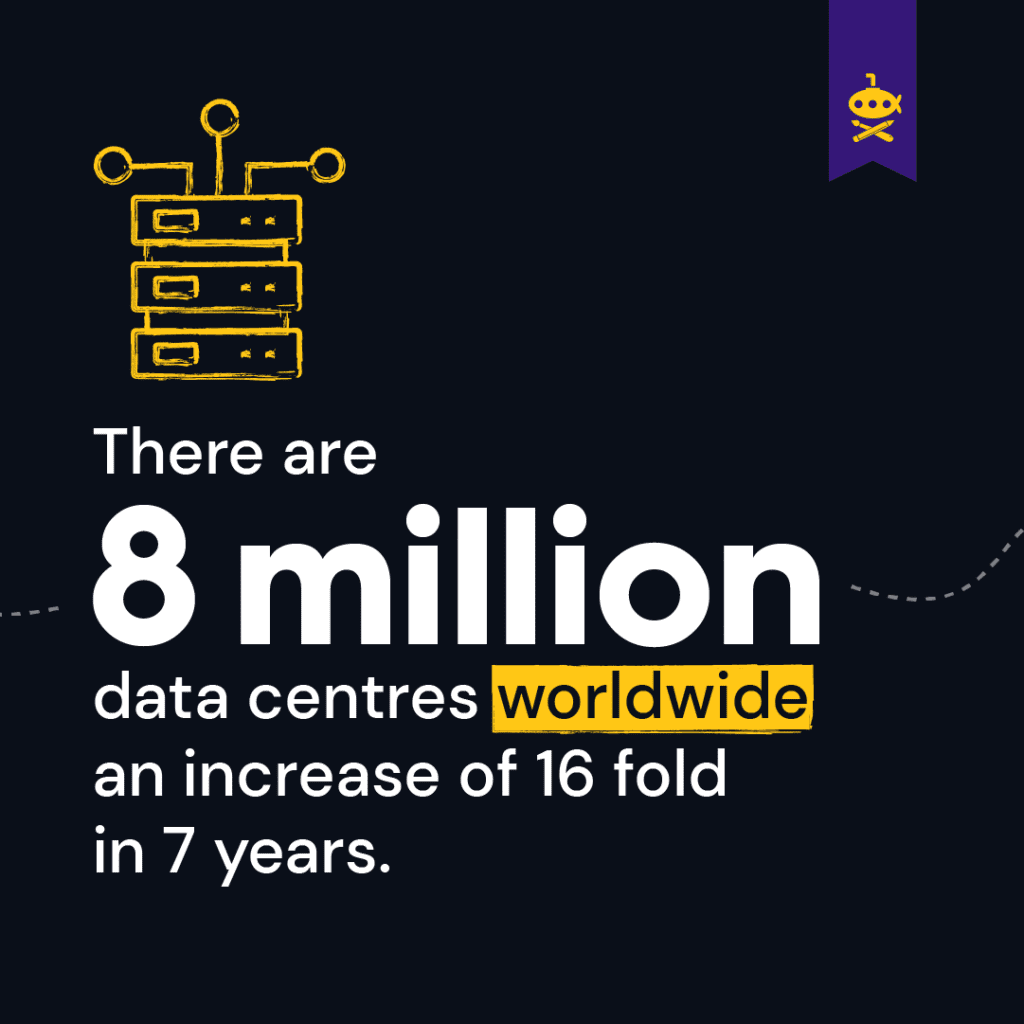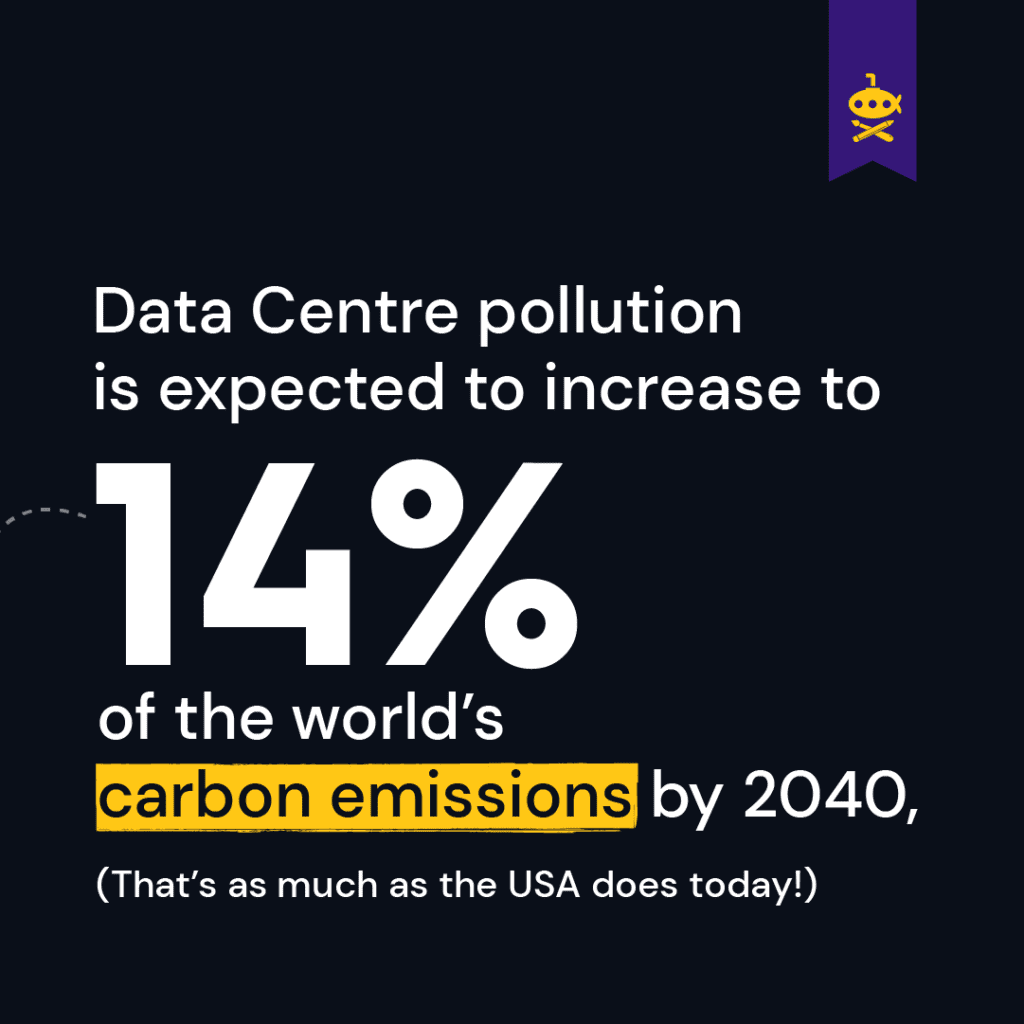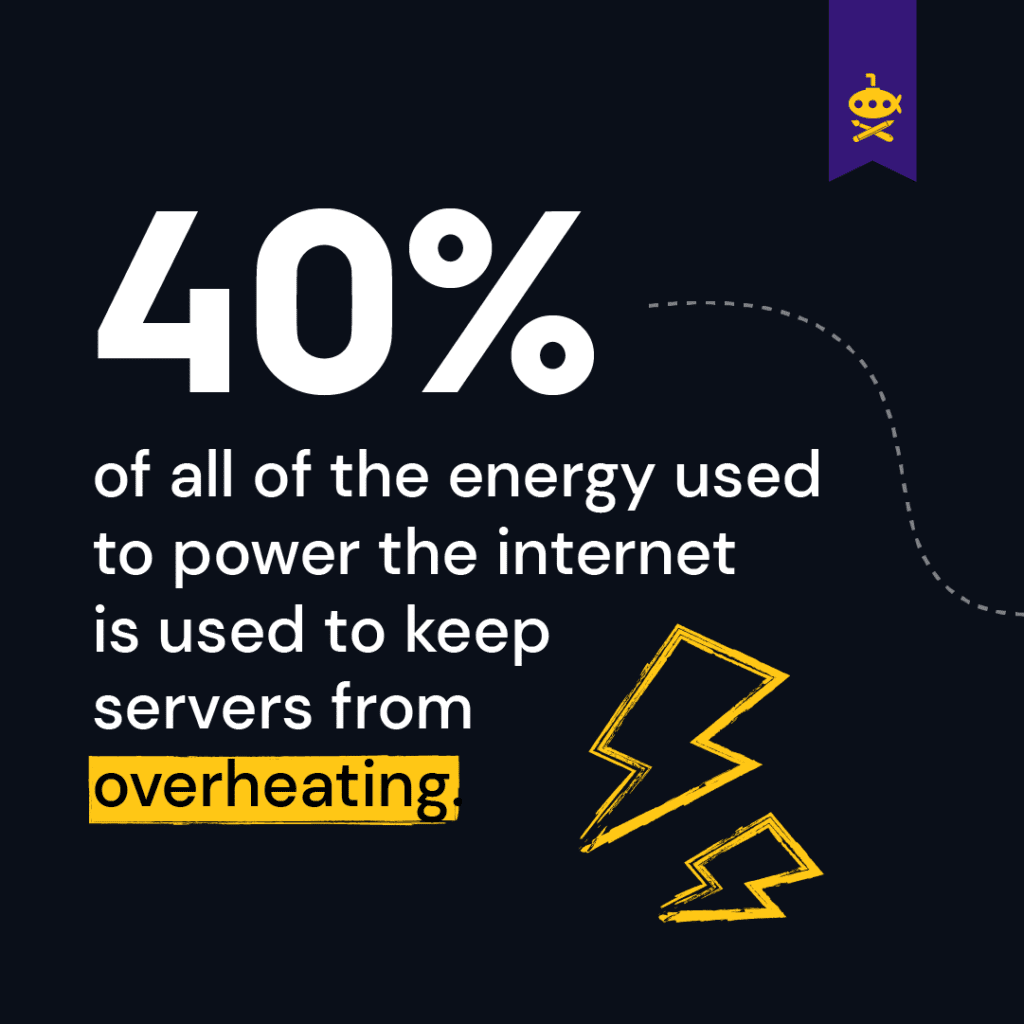Why  green hosting?
green hosting?
The impact of emissions mentioned in this article is already doubled as many articles previously written point to numbers being doubled by 2025. The Internet is also the fastest growing carbon polluting industry and it will surpass all other industries in terms of worldwide pollution. […]

Let’s begin by asking, “What is the most polluting industry today?“
Yes, you’ve got it—the Internet. And it is also the fastest growing industry. The impact of emissions mentioned in this article is already doubled as many articles previously written points to numbers being doubled by 2025. The Internet is also the fastest growing carbon polluting industry and it will surpass all other industries in terms of worldwide pollution.
What emissions? What impact?
Okay so, hopefully as many of you know, the internet is made possible by gigantic data centres, which house millions of large servers that are powered all day, every day. These servers draw energy from power grids, and unfortunately, some of our energy grids rely on carbon-polluting sources like fossil fuels. UK’s national grid makes use of renewable energy when possible. But is it good enough? You can have a look at this yourself from iamkate.com also here.
Now this isn’t the only resource the internet uses. These data centres also need cooling down, which means using our most valuable resource WATER. Researchers at Imperial College London found, however, that downloading just one gigabyte of data requires 200 litres of water. (Earthorg. Sep 2020) That is huge. As people who work in climate tech, we know that water will be one of the most expensive currencies of our future. There is huge work going on behind the scenes to avoid a world that will be water-deprived. But this is a possibility at the rate humanity is going.
Here are some facts I’ve pulled together to convey the seriousness of the situation:



Green hosting is just one way to reduce our carbon footprint. It’s not the only way, but by hosting our websites with green hosts, we contribute to a cleaner environment.
By using green web hosting providers we can make sure our websites are run on 100% renewable energy, which means no shady carbon offsetting.
Let’s end on a positive note from tech leaders:
Last year, the folks over at Google gave us a peek into how they’re doing their part by sharing their commitment to climate-conscious data centre cooling with the release of its water consumption statistics from the prior year. They used about 4.3 billion gallons in 2021 alone and on average, a Google data centre consumes 450,000 gallons of water a day. But sharing this shows they’re not shying away from talking about it – that’s a start!
Apple launched their first carbon-neutral product, Apple Watch and they claim to be cutting the majority of emissions through innovations in their materials, clean electricity and low-carbon shipping. They are also in nature-based projects to offset the small amount that remains.
What about us at Yellow Sub Creative?
We are proud to say we have been using Krystal Hosting since we opened our doors to business. We are also using our website as case study into how we can reduce the carbon emission of the sites we are using while keeping our creative flair. There is a lot of work to be done there, and we are committed to keep working at it and making sure our websites perform as best as possible.
We also make sure we use green cloud services for software clients such as Cloudflare who are completely transparent in their carbon print and publish impact reports that you can easily access. (Read more here)
How can you be more green?
Just to summarise here are the things you can consider for kick-starting your sustainability journey.
- Use green web hosting.
- Use green cloud services.
- Check your site’s carbon footprint to see what you can reduce (admittedly our own is not where we want it to be – work in progress).
- Reduce image sizes as much as possible and use webP format for your images if possible.
- Enable crawler hints for your website.
- Looking into reusable code, make use of systems out there and open source.
- Follow some of the leaders in the field;
- Our friends at Green Tech South West hosts wonderful events every month to explore “How digital technology can help preserve our environment and tackle climate change” and “The environmental impact of digital technology and the concept of ‘digital sobriety’”
- Follow my super smart friend Hannah on Linkedin.
- Learn from Green Web Foundation.
No time to cover steps 1-8? We’re here to help! Contact us and one of digital sustainability experts will get you started on your green hosting journey.
I hope this article sparks consideration of our websites’ impacts on the planet. Sure, it’s not the only way to help, but it is an excellent first step towards a more sustainable web. Green hosting is the first step we can take towards a greener web, there is much more work to be done such as making sure your sites are green as possible. But that’s a topic for another article.
As Michelle Obama and David Allen wisely put it, ‘We can do anything, but not everything—at least not all at once.’ (see what I did there?)
So until then, dear friends!
Resources:
Climateimpact.com
Thegreenwebfoundation.org
Thegreengeeks.com
Krsytal.io
Earth.org






